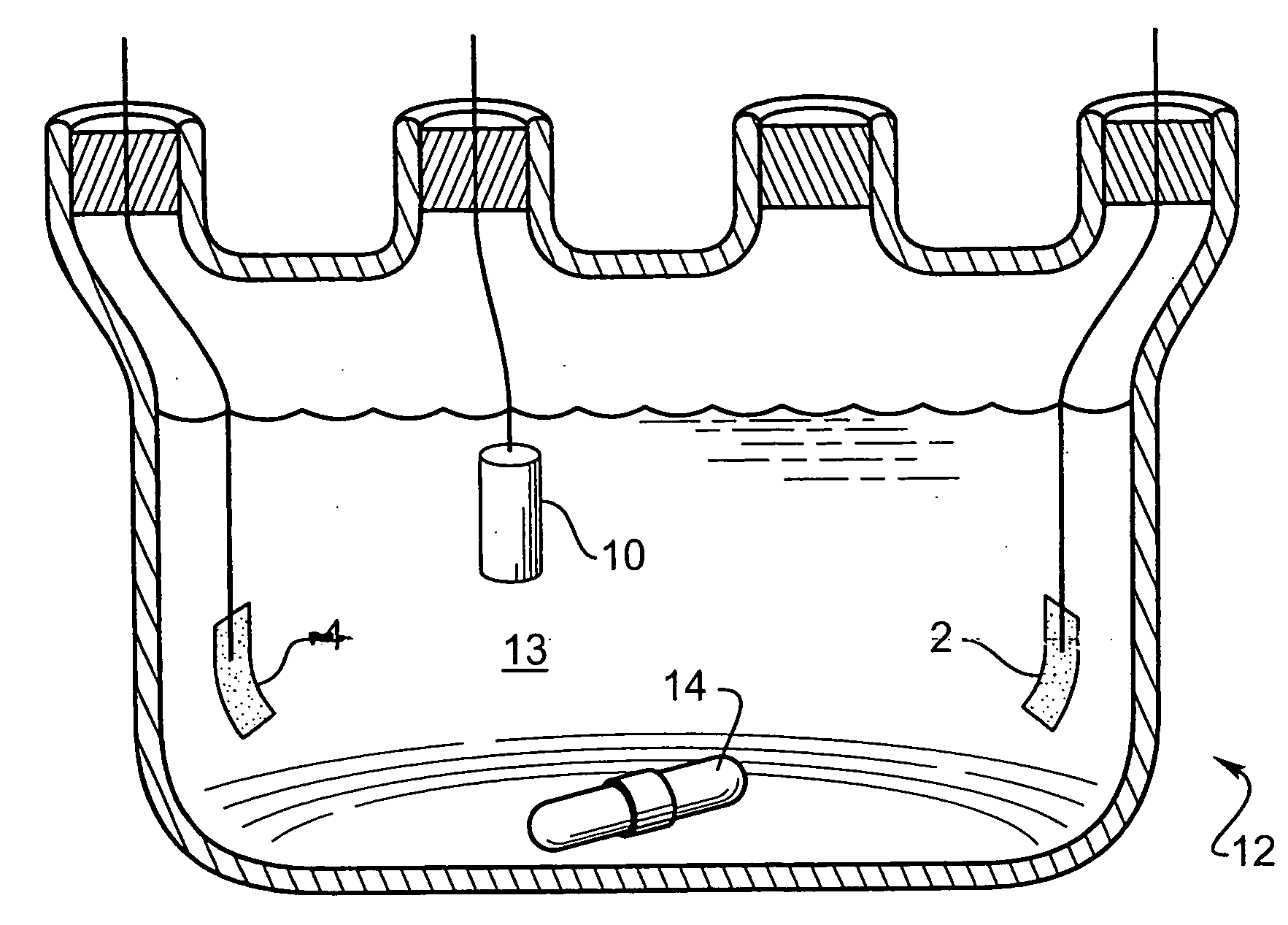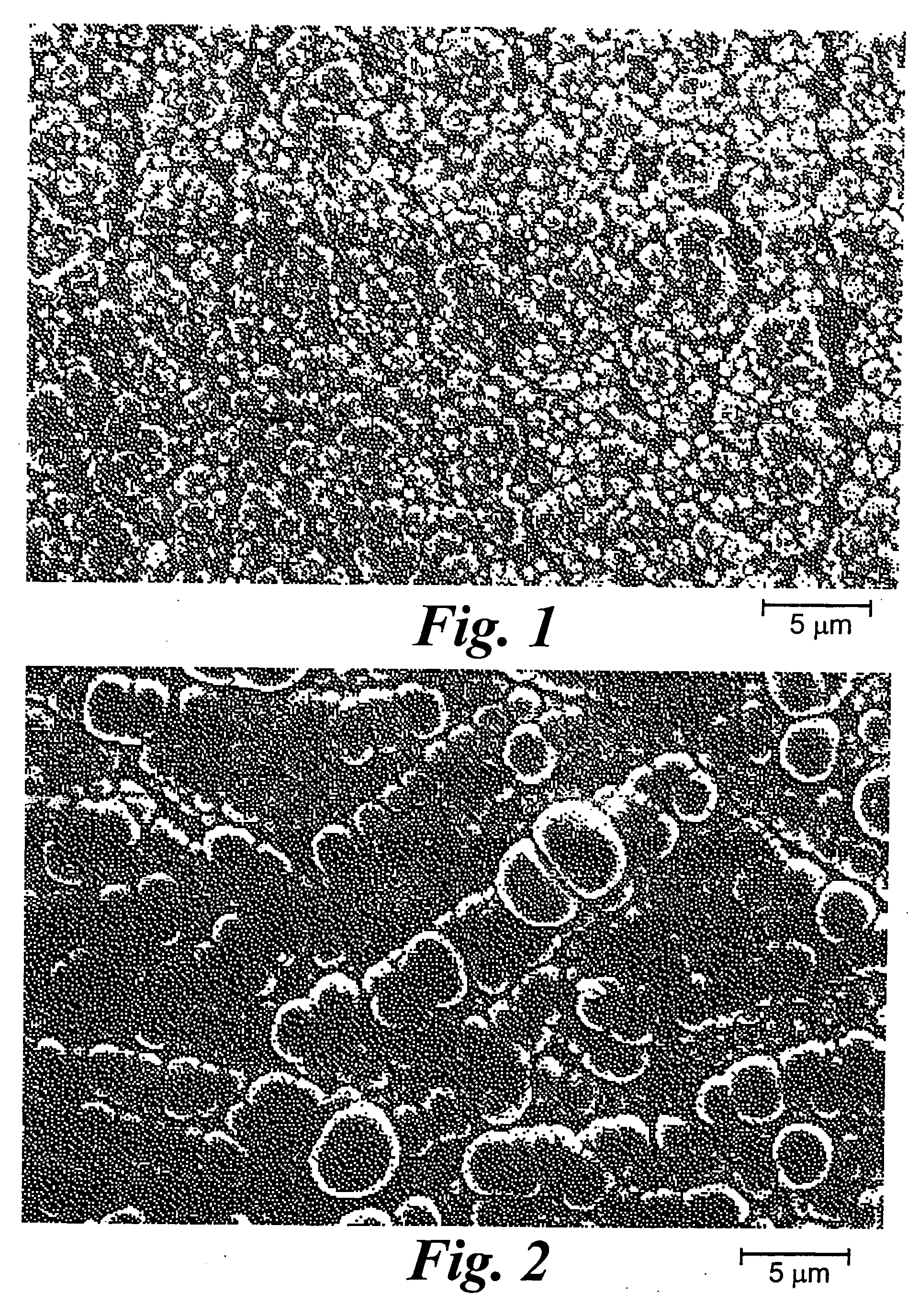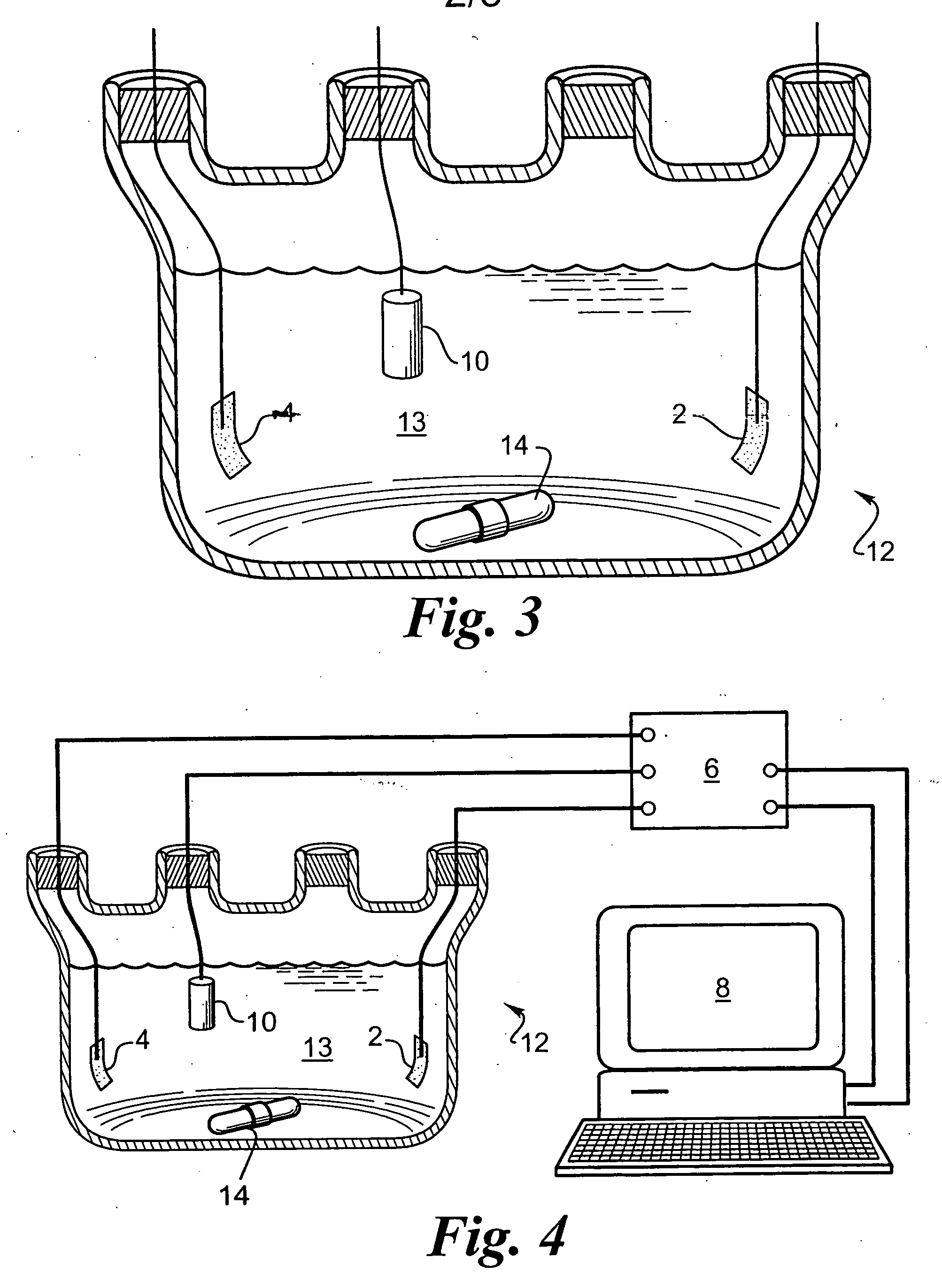Adherent metal oxide coating forming a high surface area electrode
- Summary
- Abstract
- Description
- Claims
- Application Information
AI Technical Summary
Benefits of technology
Problems solved by technology
Method used
Image
Examples
example 1
[0058] An array with 16 platinum disks embedded in silicone rubber as electrodes was plated with iridium oxide. Each platinum disk had a diameter of 500 μm and had an exposed metal surface of 20×10−4 cm2. All the electrodes in the array were shorted to a common contact point for plating. The platinum disk electrodes were pulsed at 0.35 mC / cm2, 1 ms biphasic square wave pulse at 50 Hz for 6 hours in saline. This stimulation removed surface contamination and polymer residue. The array was cleaned and electrochemically conditioned in 0.5 M H2SO4 solution by 10 cycles of voltage scans from −0.2V to +1.4V vs AgCl with 100 mV / sec scan rate. A thin layer of rough platinum (about 5 μm) was electroplated for 30 minutes on the platinum disk surface. Next, 10 cyclic voltammetric scans were carried out on the platinum surface in 4.25 mM iridium chloride solution to confirm the reduction and oxidation of iridium oxide. Then, iridium oxide was electroplated in the same solution at a constant volt...
example 2
[0059] A thin-film platinum polyimide array was used for iridium oxide plating. The array contained 16 electrodes of four different sizes, 500, 350, 250 and 150 μm diameter thin-film platinum disks, as exposed electrode surfaces. All of the electrodes in the array were shorted to common contact points for the plating. The platinum disk electrodes were first electrochemically cleaned by bubbling oxygen over the surface while the surface was held at +3V vs AgCl in 0.5 M H2SO4 for 5 sec. The surface was then cleaned by bubbling with hydrogen at −2.5V vs AgCl in 0.5 M H2SO4 for 5 seconds. This removed surface contamination and polymer residue. The array was electrochemically conditioned in 0.5 M H2SO4 solution by 10 cycles of voltage scans from −0.2V to +1.4V vs AgCl with 100 mV / sec scan rate. A thin layer of rough platinum (about 10 μm thick) was electroplated for 20 minutes on the platinum disk surface. Next, 10 cyclic voltammetric scans were carried out on the platinum surface in 4.2...
example 3
[0060] A thin-film platinum polyimide array was used for iridium oxide plating. The array contained 16 electrodes of 200 μm diameter thin film platinum disks as the exposed electrode surface. All the electrodes in the array were shorted to a common contact point for plating. The platinum disk electrodes were first electrochemically cleaned by bubbling oxygen on the surface at +3V vs AgCl in 0.5 M H2SO4 for 5 seconds. Then they were cleaned by bubbling hydrogen on the surface at −2.5V vs AgCl in 0.5 M H2SO4 for 5 seconds. This removed surface contamination and polymer residue. The array was electrochemically conditioned in 0.5 M H2SO4 solution by 10 cycles of voltage scans from −0.2V to +1.4V vs AgCl with a 100 mV / sec scan rate. A thin layer of platinum gray (about 10 μm thick) was electroplated for 20 minutes on the platinum disk surface. Next, an iridium layer was electrodeposited on the platinum gray surface. Finally, iridium was electrochemically activated to form iridium oxide b...
PUM
 Login to View More
Login to View More Abstract
Description
Claims
Application Information
 Login to View More
Login to View More - Generate Ideas
- Intellectual Property
- Life Sciences
- Materials
- Tech Scout
- Unparalleled Data Quality
- Higher Quality Content
- 60% Fewer Hallucinations
Browse by: Latest US Patents, China's latest patents, Technical Efficacy Thesaurus, Application Domain, Technology Topic, Popular Technical Reports.
© 2025 PatSnap. All rights reserved.Legal|Privacy policy|Modern Slavery Act Transparency Statement|Sitemap|About US| Contact US: help@patsnap.com



